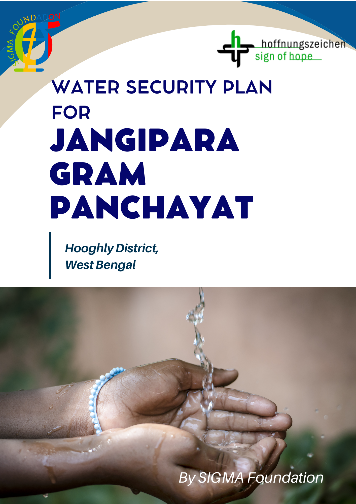Dated: 18th November 2024
Per capita availability of fresh water in India is declining over the years and climate change is exasperating the problem. Many areas face problem in accessing drinking water during summer months. Out of total annual freshwater use, less than 10 percent is used for domestic purposes while around 80 percent is used for agriculture. So, availability of drinking water cannot be ensured without a holistic water security. Because of climate change there is uncertainty of availability water even during the kharif session, which is increasing the risk of agriculture causing both food insecurity and livelihood crisis. So, preparing holistic Water Security Plan (WSP) is critically important. 
Recently, the Panchayats have been directed to prepare their annual plan on 9 different themes of which one is “water sufficient village”. Such planning on a yearly basis will be more effective by preparing a holistic WSP for any area. Preparation of WSP has not received priority as it requires support of experts of geohydrology, remote sensing, GIS etc. SIGMA Foundation has taken up a project to prepare a WSP for Jangipara GP within Jangipara block of Hooghly district with grants from Sign of Hope, Germany. The block has been classified as semi-critical implying that 70 to 90 percent of its groundwater resources has been exploited and there is steady decline of static groundwater table. WSP will address the issue of unsustainable drawl of groundwater.
The GP has an area of around 18 sq km with a population of little above 28,000. The cropping intensity of the GP is 196 percent, implying that intensive agriculture is practiced in that area.
WSP was prepared with active participation of the GP and the people living there, who helped to collect primary data on surface water storage and knowledge, attitude and practice related to water use. Secondary data was collected from the GP and the agriculture department and processing of satellite image (Landsat 8 OLI). Land Use & Land Cover (LULC) plan was prepared for the years 2014 and 2024 using the satellite date. To determine groundwater potential zone in the study area, 12 thematic maps, viz., LULC, geology, geomorphology, soil texture, topographic elevation (Digital Elevation Model or DEM), slope, drainage density, normalized difference vegetation index (NDVI), rainfall, groundwater table depth of pre-monsoon and post-monsoon and seasonal groundwater fluctuation map has been generated using satellite imagery and various conventional datasets. Topographic elevation (DEM), slope and drainage density map have been developed from SRTM (Shuttle Radar Topographic Mission) DEM at 90-meter spatial resolution. Annual availability of replenishable quantity of water (both surface and groundwater and rainfall that is directly used) and annual demand of water has been estimated to work out the water balance. The groundwater recharge potential zone has been delineated. The WSP provides several recommendations to augment water availability and control demand of water. The plan has been discussed with the GP and they have already started implementing various rainwater harvesting structure with guidance of SIGMA Foundation.
